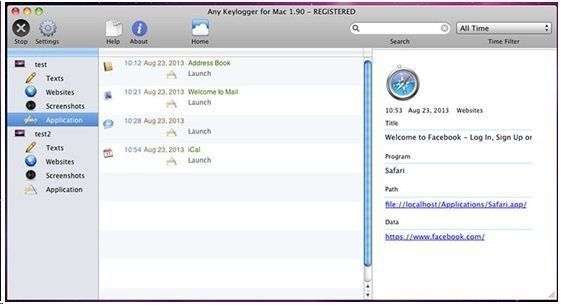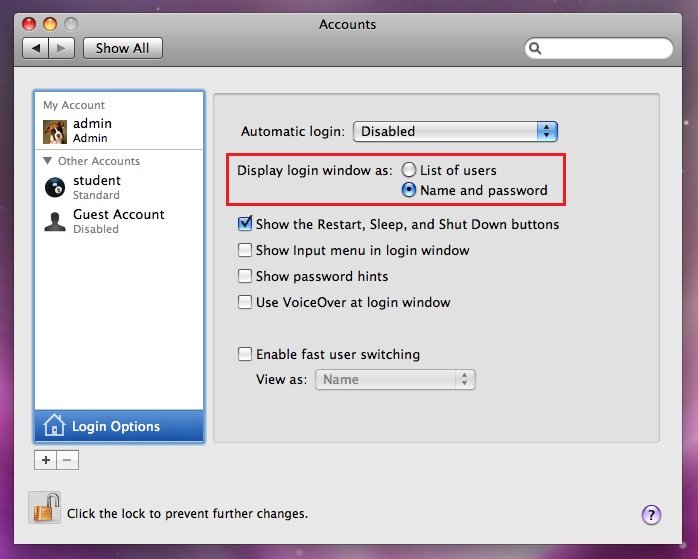Mac Os X 106 Snow Leopard Server
Adding A Local Computer To A Domain Via Powershell
If you have many computers to add to a domain, have an onboarding automation process, or prefer the command-line, you can use PowerShell to add a computer to a domain.
Assuming youre on a Windows 10 workgroup computer that can access an existing domain controller:
1. Open up Windows PowerShell ensuring you run it as administrator.
Related:How to Run PowerShell as Administrator
In the PowerShell console, run the Add-Computer cmdlet. This cmdlet performs the same action as adding a computer to a domain via the GUI. Specify the domain name to add the computer to with the DomainName parameter and optionally specify the Restart parameter to restart the computer when complete automatically.
You can also specify the Credential parameter to specify the username and password sooner. See this article for more information. If youd like to add a computer to a different OU upon creation, specify the OUPath parameter. For more options, run Get-Help Add-Computer -Full.
Add-Computer -DomainName DomainName -Restart
Adding A Macbook To A Windows Domain
Enabling access to the Windows domain allows you to configure your MacBook to work on your network so that you can share folders, files and connected printers. Mac computers use a file sharing technology called Apple File Protocol, while Windows computers use Server Message Block. The AFP and SMB file systems don’t work together, but you can get around this lack of compatibility by setting your Mac to recognize the Active Directory used by Windows computers. To access the Directory Utility and connect your MacBook to a Windows domain, first enable the root user.
1
2
3
4
5
6
Select “Active Directory,” and then click the Pencil icon.
7
Enter the domain for the Windows computer in the Active Directory Domain field. The domain format should look similar to “ad.domain.com.” If you don’t know the domain name, point your mouse at the upper-right corner of the screen and move down. Click “Search,” type “System” into the Search box, select “Settings,” and then click “System.” The domain name is listed in the “Computer Name, Domain, and Workgroup Settings” section.
8
Enter a computer name in the Computer ID field, and then click the “Bind…” button.
9
Enter an administrator username and password in the Username and Password field. If you don’t know this information, ask your system administrator.
10
References
Recommended Reading: Use Squarespace With Godaddy
Unable To Connect To Server
This error can pop up also using the Directory Utility panel and as much as its pointing us in the direction of an error it is still not clear if this is correct or not. In my case, the server and Mac device are in sync regarding time so the problem is not there. Just to point out, if at any point, your Mac ends up being over 5 min our of sync regarding time with your domain controller, you will not be able to join at all, or if your device is already a member of the domain your users will not be able to log on until you fix the time gap.
So at the moment, this is where I am. Stuck in time. Just to finish up with a terminal-based bind example and how this particular error reports in the same.
Ways To Add Windows 10 To Active Directory Domain

February 21st, 2020 by AdminLeave a reply »
How can I join a Windows 10 Pro computer to a domain? Before getting started, you need to change the DNS settings or add a new entry to the Windows Hosts file so your PC can communication with domain controller. Afterwards, you can add Windows 10 to Active Directory domain using any of the following methods. Note that only Windows 10 Pro, Enterprise or Education edition can join a domain.
Method 1: Add Windows 10 to Domain from System Properties
Method 2: Add Windows 10 to Domain from Settings App
Method 3: Add Windows 10 to Domain Using PowerShell
Also Check: How Much To Purchase A Domain Name
Mac Management With Active Directory Falls Short
IT organizations have traditionally leveraged AD as their identity provider as well as their choice for managing Windows devices. Active Directory offers a number of user and device management capabilities as an identity provider for Windows users and systems. However, the majority of these management capabilities are not available for Mac . This presents a few major issues for IT admins.
Zero-Touch Enrollment with JumpCloud MDM
Experience the simplest macOS onboarding experience possible for remote work environments
Os X Active Directory Integration How To Bind A Mac To Ad
Are you tasked with establishing appropriate OS X Active Directory Integration in your environment? Are we talking apples and oranges here or what? Most IT professionals are efficient with the Mac OS X or Windows Active Directory but not both. Im sure youve had plenty of good fun harassing one or the other on either platform. Is it really possible to allow a Macintosh Computer to become a law abiding citizen of an AD Domain? If so, how much Pepto Bismol am I going to need to get through it? Sorry for the drama, but I wanted to get your attention.
As it turns out, the Mac natively supports OS X Active Directory Integration for their loyal followers that apparently are being coerced into joining a Windows domain.
Why would an organization find itself needing OS X Active Directory Integration ? Most shops decide at conception if they are going to be Mac or PC based companies. But what happens if Company A purchases Company B ? Are they really going to want to replace possibly hundreds or thousands of Macs from Company B with new PCs. Of course not. Being able to join all those Macs to the AD domain is invaluable from that point of view. On the other hand, perhaps new hires are Mac experts and know nothing about PCs. In that situation, A computer needs to be purchased either way, so why not be able to get them a computer they are already proficient at and let them hit the ground running?
Recommended Reading: Average Domain Name Price
Bind Using A Configuration Profile
The directory payload in a configuration profile can configure a single Mac, or automate hundreds of Mac computers, to bind to Active Directory. As with other configuration profile payloads, you can deploy the directory payload manually, using a script, as part of an MDM enrollment, or by using a client-management solution.
Payloads are part of configuration profiles and allow administrators to manage specific parts of macOS. You select the same features in Profile Manager that you would in Directory Utility. Then you choose how the Mac computers get the configuration profile.
In the Server app on your Mac, do the following:
-
To configure Profile Manager, see Start Profile Manager in the macOS Server User Guide.
-
To create an Active Directory payload, see Directory MDM payload settings for Apple devices in Mobile Device Management Settings for IT Administrators.
If you dont have the Server app, you can
I Bind Os X To A Windows Domain
Follow these steps to bind OS X to a Windows domain:
Note**: By default, Windows will automatically create thecomputer object account in ADDS if one does not already exist. However, domainor enterprise admins may restrict this as a security feature tocurb random nodes from being joined to the domain. Additionally, Organizational Units may be created as a form to compartmentalize ADDS objects by one or more classifications or departments.Many enterprises will utilize OUs as a means to organize objects and accounts separately from the items created by default when a domain controlleris promoted and ADDS is created.
Don’t Miss: Domain Registration Cost Per Year
Os X Active Directory Integration
Minimum Requirements:
- Server hardware running Windows Server 2000-2012 Standard
- Active Directory Domain Services setup and configured
- Domain Administrator-level account
- Apple desktop or laptop running OS X 10.5 or newer
Step 1: Bind OS X to a Windows Domain
Step 2: Modify Directory Services Settings
Creating A Mobile Account
There is an option to Create mobile account at login. Customers have reported being unable to log in using cached credentials. That is, after they leave the campus network and reboot the computer, they are unable to log into their mobile account. We dont have a definitive explanation for the cause, but the following steps seem to prevent the issue.
It may also be necessary to make the domain account an Admin on the Mac. At this point a login from off campus should work.
You May Like: How Much To Purchase A Domain Name
How To Join A Mac Os X Computer To Active Directory
4sysops – The online community for SysAdmins and DevOps
- Powerline: Customize your PowerShell console – Tue, Aug 31 2021
Given Microsofts historically contentious relationship with Apple, it never ceases to amaze me at the relatively high degree of interoperability that does exist between a Mac OS X workstation and an Active Directory Domain Services domain.
For instance, a domain-joined Mac workstation allows users to enjoy the following privileges:
- Kerberos authentication and delegation, including Single Sign-On to local, AD, and Open Directory resources
- AD password policy enforcement
- Support for AD user and group accounts
- Windows home folders
Of course, Mac computers do not have a Windows Registry and so therefore cannot be managed by Group Policy . If you desire an even tighter coupling between Mac workstations and Active Directory resources, then check out nifty third-party solutions like Centrify.
In this tutorial I will show you how to bind a Mac computer to a Windows Server 2008 R2 Active Directory domain. Specifically, I will assume that your Macs run either Mac OS X 10.5 Leopard or Mac OS X 10.6 Snow Leopard. Lets get to work!
Configure Domain Access In Directory Utility On Mac

Important: With the advanced options of the Active Directory connector, you can map the macOS unique user ID , primary group ID , and group GID attributes to the correct attributes in the Active Directory schema. However, if you change these settings later, users might lose access to previously created files.
In the Directory Utility app on your Mac, click Services.
Enter an administrators user name and password, then click Modify Configuration .
Select Active Directory, then click the Edit settings for the selected service button .
Enter the DNS host name of the Active Directory domain you want to bind to the computer youre configuring.
The administrator of the Active Directory domain can tell you the DNS host name.
If necessary, edit the Computer ID.
The Computer ID, the name the computer is known by in the Active Directory domain, is preset to the name of the computer. You can change it to conform to your organizations naming scheme. If youre not sure, ask the Active Directory domain administrator.
Important: If your computer name contains a hyphen, you might not be able to bind to a directory domain such as LDAP or Active Directory. To establish binding, use a computer name that does not contain a hyphen.
If the advanced options are hidden, click the disclosure triangle next to Show Options. You can also change advanced option settings later.
Select options in the User Experience pane.
See Map the group ID, Primary GID, and UID to an Active Directory attribute.
Also Check: How Much Does It Cost To Buy A Domain